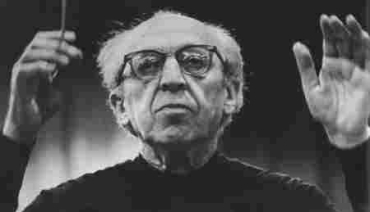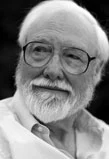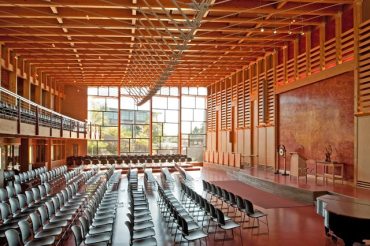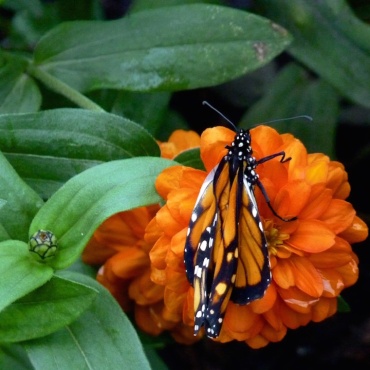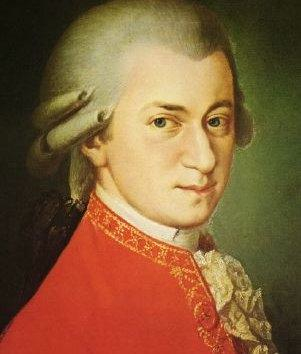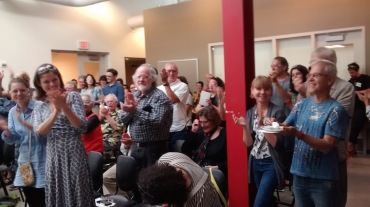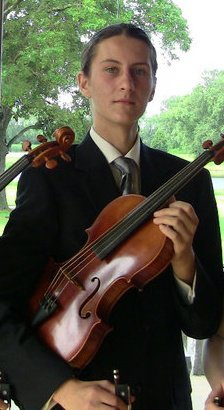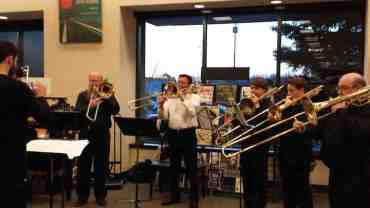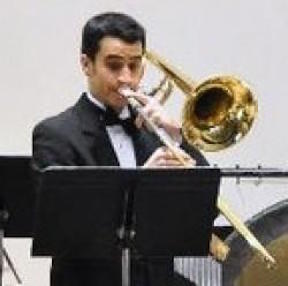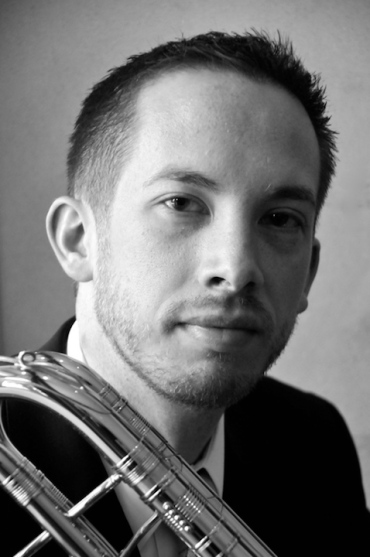The Well-Tempered Ear
Classical music education: The all-student Madison Area Youth Chamber Orchestra (MAYCO) performs music by Mozart and Aaron Copland this coming Saturday night and Sunday afternoon
1 Comment
By Jacob Stockinger
This coming weekend, the Madison Area Youth Chamber Orchestra (MAYCO, below in a photo by Steve Rankin) performs “Interplay,” featuring music by Mozart, Copland and Grieg.
There will be two performances.
The first is on Saturday, Aug. 4, at 7:30 p.m. at the First United Methodist Church (below), 203 Wisconsin Avenue, off the Capitol Square.
Then on Sunday, Aug. 5, MAYCO will perform at 12:30 p.m. in Brittingham Gallery 3 at the UW-Madison’s Chazen Museum of Art as part of the monthly “Sunday Afternoon Live at the Chazen” series, which can be STREAMED LIVE by going to: https://www.chazen.wisc.edu/index.php?/events-calendar-demo/event/sunday-afternoon-live-at-the-chazen-8-5-18/
Admission for the Saturday performance is $10 at the door; students by donation. The Sunday performance is FREE, and reservations can be made by going to the above link.
For more information, visit www.mayco.org or www.facebook.com/madisonchamberorchestra.
ABOUT THE ORCHESTRA
MAYCO is a free summer festival ensemble dedicated to providing an intensive small orchestra experience for advanced high school and college musicians.
Founded in 2010 by music director Mikko Rankin Utevsky, the orchestra prepares a full program over the course of each one-week summer session, culminating in a public concert (below is a photo by Dennis Gotowksi of the concert this past June).
For The Ear, Utevsky (below top) and his general manager and concertmaster-wife Thalia Coombs (below bottom) answered some questions about the concerts:
WHAT CAN YOU TELL US ABOUT THE PROGRAM?
The orchestra will be joined by guest soloist Trevor Stephenson (below), who is the artistic director and keyboard player of the Madison Bach Musicians. On fortepiano, he will solo in Mozart’s Piano Concerto No. 9 in E-flat Major, K. 271, sometimes nicknamed the “Jeunehomme” Concerto. (You can hear the lively, tuneful and infectious last movement of the Mozart concerto in the YouTube video at the bottom.)
Stephenson has led workshops on historical performance practices with the orchestra in past seasons, and we’re delighted to work with him to bring one of Mozart’s weirdest and wildest youthful masterpieces to life.
The ballet suite from “Appalachian Spring” by Aaron Copland (below) is one of the defining works of his classic American sound, juxtaposing the pastoral beauty of the countryside with his trademark rhythmic vitality. We are performing the original chamber version, in which the clarity of texture illuminates the intricate internal structure of the piece.
Two high school students from our Conducting Apprenticeship Program will lead Grieg’s affecting miniature, “Last Spring,” for string orchestra. Cellist Elizabeth Strauss and violinist Monona Suzuki (below, in 2013) are this year’s Apprentices.
WHY IS THE CONCERT CALLED “INTERPLAY”?
We wanted to highlight the sense of conversation and interaction present in the two major works on this program.
The Mozart concerto is remarkable for the degree of interplay between soloist and orchestra. From the opening bars they are constantly interrupting each other, finishing each other’s sentences. It’s what gives the piece its unique sense of drama.
There’s a truism that Mozart made everything he wrote into an opera, and it’s certainly evident here: the melodies could have been lifted straight out of “The Marriage of Figaro.”
In the Copland work, it’s more about the intricacy of texture and the sense of playfulness in the way the various parts interact.
This project is funded in part by a grant from the Madison Arts Commission, with additional funds from the Wisconsin Arts Board; and by Dane Arts, with additional funds from the Endres Mfg. Company Foundation, The Evjue Foundation, Inc., charitable arm of The Capital Times, the W. Jerome Frautschi Foundation, and the Pleasant T. Rowland Foundation.
Tags: #AaronCopland, #AppalachianSpring, #CapitolSquare, #ChamberOrchestra, #ChazenMuseumofArt, #ChristianChurch, #ChristianReligion, #Classicalera, #CollegeStudent, #DaneArts, #EdvardGrieg, #EndresMfg.Company, #EvjueFoundation, #FirstUnitedMethodistChurch, #HighSchool, #HistoricallyInformedPerformancePractices, #JeunehommeConcerto, #JohannSebastianBach, #LiveStreaming, #MadisonAreaYouthChamberOrchestra, #MadisonArtsCommission, #MadisonBachMusicians, #MarriageofFigaro, #MethodistReligion, #MikkoRankinUtevsky, #MikkoUtevsky, #MusicEducation, #OperaAria, #PeriodInstrument, #PianoConcerto, #PleasantT.Rowland, #PublicConcert, #SaturdayNight, #Sundayafternoon, #SundayAfternoonLiveattheChazen, #TheCapitalTimes, #TheMarriageofFigaro, #TrevorStephenson, #UniversityofWisconsin, #UniversityofWisconsin-Madison, #W.JeromeFrautschi, #WisconsinArtsBoard, #WolfgangAmadeusMozart, #YoungPeople, #YouTubevideo, Aaron Copland, afternoon, American, Appalachia, Appalachian Spring, apprentice, Arts, Bach, beauty, Capitol Square, cellist, Cello, Chamber music, charitable, Chazen Museum of Art, Christian church, Christian religion, Classical era, Classical music, composer, Concert, concerto, conductor, conversation, countryside, Dane Arts, donation, Edvard Grieg, Endres Mfg. Company, ensemble, festival, fortepiano, foundation, high school, historically informed performance practices, Jacob Stockinger, Jeunehomme, Johann Sebastian Bach, link, live, live streaming, Madison, Madison Area Youth Chamber Orchestra, Madison Arts Commission, Madison Bach Musicians, masterpiece, MAYCO, MBM, melody, Methodist, Methodist Religion, Mikko Utevsky, Mozart, Music, Music education, night, opera, Orchestra, pastoral, performance, period-instrument, Piano, Piano concerto, Pleasant T. Rowland, public, reservation, rhythm, Saturday, Season, solo, soloist, Spring, streaming, structure, Student, summer, Sunday, Sunday Afternoon Live at the Chazen, symphony, texture, The Marriage of Figaro, Trevor Stephenson, truism, United States, University of Wisconsin-Madison School of Music, University of Wisconsin–Madison, video, Viola, Violin, violinist, vitality, W. Jerome Frautschi, Website, weird, wild, Wisconsin Arts Board, Wolfgang Amadeus Mozart, young people, youthful, YouTube
Classical music: Is Prokofiev more Romantic than modernist? Hear for yourself at the concert Friday night by the Wisconsin Chamber Orchestra and violinist Giora Schmidt. Plus, the UW Symphony Orchestra performs a FREE concert Thursday night
Leave a Comment
ALERTS: This Thursday night at 7:30 p.m. in Mills Hall, the UW-Madison Symphony Orchestra will perform a FREE concert under the baton of alumnus and guest conductor Mikko Rankin Utevsky, the founder and director of the Madison Area Youth Chamber Orchestra (MAYCO). The program features the Symphony No. 5 by Franz Schubert; “Entr’acte” by Caroline Shaw; and the “Holberg Suite” by Edvard Grieg.
The week’s FREE Friday Noon Musicale at the First Unitarian Society of Madison, 900 University Bay Drive, features guitarist Steve Waugh and flutist Sridhar Bagavathula playing music by Frederic Chopin, Heitor Villa-Lobos, Astor Piazzolla, Francisco Tarrega, Francois Morel and Jerome Kern. The concert runs from 12:15 to 1 p.m.
By Jacob Stockinger
Sometimes the frame helps to define the picture, to reveal or at least reinforce the picture’s meaning.
Such is the case with this Friday night’s appealing and stand-out concert by the Wisconsin Chamber Orchestra with conductor Andrew Sewell and Israeli violin soloist Giora Schmidt (below, in a photo by David Getzschman).
The concert is at 7:30 p.m. in The Capitol Theater of the Overture Center, 201 State Street.
Tickets are $15-$80 with student tickets available for $10. For more information about the performers and the program, as well as how to obtain tickets, go to: https://wisconsinchamberorchestra.org/performances/masterworks-ii-3/
The program features the “Petite Symphonie” (Small Symphony) for winds by the Romantic French composer Charles Gounod (below), who is much better known for and more often performed for his operas “Faust” and “Romeo and Juliet.”
Then there is the melodic, popular and often performed Serenade for Strings by the Russian arch-Romantic Peter Ilyich Tchaikovsky (below). Like so much Tchaikovsky – both his Piano Concerto No. 1 and his Violin Concerto, now staples of the repertoire, were deemed unplayable when first composed – the Serenade can sound less challenging than it really is.
In between comes a modern masterpiece that The Ear is especially fond of: The Violin Concerto No. 2 in G minor by the Soviet composer Sergei Prokofiev (below).
And that is where it gets especially interesting.
Prokofiev is often lumped together with his Russian contemporary Dmitri Shostakovich (below). Both were virtuoso pianists. Both faced hardships from the Soviet dictator Josef Stalin. And while it is true that some of Prokofiev’s music shares a certain spikiness as well as harmonic darkness and dissonance with that of his contemporary, the pairing can be misleading.
To The Ear, much more — maybe even most — of Prokofiev’s music shares a lot more with the late Russian Romantics, including Tchaikovsky and Sergei Rachmaninoff. Roughly and with some exceptions, he sees Prokofiev as modern Russia’s Mozart for his melodic clarity, and Shostakovich as modern Russia’s Beethoven for his harmonic thickness.
The Ear doesn’t know if that same point is intended and was in mind when maestro Andrew Sewell (below) set up the concert, but he suspects it was because Sewell is a canny and intelligent programmer.
But intentional or not, no matter: the point stands.
If a single moment offers proof, The Ear would single out the opening of the slow movement of the Prokofiev concerto.
It has a beautiful melodic line, moving harmonies and a hypnotic clock-like rhythm to a theme-and-variation development that sounds unmistakably modern but accessibly modern in the same way that the never-fail Violin Concerto by the American composer Samuel Barber does.
You can hear the second movement in a YouTube video at the bottom and make up your own mind. It is performed by the way by the great David Oistrakh for whom Prokofiev composed the concerto.
Suffice it to say that The Ear has never heard that movement without the little hairs on the back of his neck standing up, much like happens with the famous 18th Variation in Rachmaninoff’s “Rhapsody on a Theme of Paganini” or the opening of the first and second movements of the Barber Violin Concerto.
If you know that music by Prokofiev, you will be happy you hear it again. And if you don’t already know it, you will be forever grateful to have made its acquaintance.
Anyway, The Ear will assume that the programming was deliberate and establishes for the audience a context for the Prokofiev, which is the most important and substantial work on the program.
And Giora Schmidt (below),k who is making his Madison debut, certainly sounds like the kind of virtuoso who will do justice to the work. Just read the critics’ raves on his website:
Tags: #AndrewSewell, #AstorPiazzolla, #CharlesGounod, #DmitriShostakovich, #FluteMusic, #FranciscoTarrega, #FrancoisMorel, #FranzSchubert, #FredericChopin, #FrenchMusic, #GioraSchmidt, #GuitarMusic, #HeitorVilla-Lobos, #JeromeKern, #JosefStalin, #OvertureCenter, #PeterTchaikovsky, #PeterTchaikowsky, #RomanticMusic, #RomeoandJuliet, #RussianMusic, #SamuelBarber, #SergeiProkofiev, #SergeiRachmaninoff, #SovietMusic, #UnitarianSociety, #ViolinConcerto, #ViolinMusic, #WisconsinChamberOrchestra, 18th Variation, Andrew Sewell, Arts, audience, Capitol Theater, Caroline Shaw, Cello, Chamber music, Chopin, clarity, Classical music, Clock, composer, concerto, conductor, context, critic, dark, darkness, David Oistrakh, debut, dictator, dissonance, Edvard Grieg, Faust, First Unitarian Society of Madison, flute, frame, France, free, French, Friday, Giora Schmidt, Grieg, guitar, harmony, Holberg Suite, intelligent, Israel, Jacob Stockinger, Johann Sebastian Bach, justice, Madison, Madison Area Youth Chamber Orchestra, masterpiece, MAYCO, meaning, melodic, melody, Mikko Rankin Utevsky, Mikko Utevsky, modern, modernism, movement, Music, musicale, night, opera, Orchestra, Overture Center, performer, Piano, Picture, program, Prokofiev, Rachmaninoff, Rhapsody on a Theme of Paganini, rhythm, Romantic, Romanticism, Russia, Samuel Barber, Shostakovich, solo, soloist, Soviet, Stalin, Student, symphony, ticket, United States, University of Wisconsin-Madison School of Music, University of Wisconsin–Madison, USSR, Villa-Lobos, Viola, Violin, virtuoso, Website, Wisconsin, Wisconsin Chamber Orchestra, YouTube
Classical music education: The Madison Area Youth Chamber Orchestra ends as it began — with an impressive display of young talent in both classic and contemporary music
3 Comments
By Jacob Stockinger
Here is a special posting, a review written by frequent guest critic and writer for this blog, John W. Barker. Barker (below) is an emeritus professor of Medieval history at the University of Wisconsin-Madison. He also is a well-known classical music critic who writes for Isthmus and the American Record Guide, and who for 12 years hosted an early music show every other Sunday morning on WORT-FM 89.9 FM. He serves on the Board of Advisors for the Madison Early Music Festival and frequently gives pre-concert lectures in Madison.
By John W. Barker
On Friday evening, the Madison Area Youth Chamber Orchestra (MAYCO, below in a photo by John W. Barker) gave, in the Atrium Auditorium at the First Unitarian Society of Madison, the concert that concluded its sixth season.
Founded in 2011, it has been a remarkable venture that has given student musicians of high-school level the chance to enjoy full-scale orchestral experience.
But the group’s founder and director, the versatile and multi-talented Madison native Mikko Rankin Utevsky (below), is apparently irreplaceable in this effort; and he has found that he must move on in his career. So, this latest and 10th concert was also the orchestra’s last.
To mark the occasion, Utevsky, who just graduated from the University of Wisconsin-Madison School of Music, is an enthusiastic champion of new music, and the orchestra commissioned a new composition, which then received its world premiere on Friday night.
The composer is the 25-year-old, Minneapolis-based avant-garde musician Ben Davis (below) who created a work with the not very helpful title of “is a is a is b is.” (I’m not making that up!) It is scored for a full ensemble of strings, winds and percussion plus an electronic screeching machine.
It is, in truth, not a piece of music at all, but a 20-minute experiment in the kinds of unusual — and not particularly pleasant — sounds that a group of orchestral players can make with their instruments. There are passages of repeated unison notes (the same one over and over) at goodly volume. And the last three minutes or so is an unaccompanied solo for the screeching machine on a single, piercing tone.
Whether this made a worthy valedictory salute to MAYCO’s audience and supporters is, I suppose, a matter of taste.
Fortunately, this new work was cushioned on either side by much more familiar material.
Opening the program was the beloved Overture to the opera The Barber of Seville by Gioachino Rossini. This was brought off with full-steam-ahead momentum by the players under Utevsky’s enthusiastic leadership.
And then, to conclude, came the same work that Utevsky included in the very first MAYCO program: Ludwig van Beethoven’s Fifth Symphony.
The players were clearly quite fired up at the chance to tackle this score and did themselves genuine credit. Utevsky provided fast and forceful leadership that stressed the dramatic power of this music—which was, in its day, as surprising and shocking as a lot of “new” music today, we must remember.
The audience shared with the performers a rousing experience.
Among his other functions, Utevsky also wrote admirably illuminating program notes for the Rossini and Beethoven works—contrasting with those contributed by Davis, which were as nose-thumbing as his composition.
It is sad to think that MAYCO is now a thing of the past. What a wonderful idea it has been, something that testifies to the remarkable quantity and quality of young musical talent here.
If his orchestra is now gone, we must certainly keep our eyes and ears open for what the gifted Utevsky moves on to next.
Tags: American Record Guide, Arts, avant-garde, Beethoven, Ben Davis, Cello, Chamber music, Classical music, commission, composer, Concert, conductor, contemporary music, Education, Fifth Symphony, First Unitarian Society of Madison, History, Isthmus, John Williams, lectures, Ludwig van Beethoven, Madison, Madison Area Youth Chamber Orchestra, Madison Early Music Festival, MAYCO, Medieval, Mikko Utevsky, Music, Music education, New Music, opera, Orchestra, Overture, professor, Pyotr Ilyich Tchaikovsky, Rossini, symphony, The Barber of Seville, United States, University of Wisconsin-Madison School of Music, University of Wisconsin–Madison, Viola, Violin, world premiere, WORT-FM 89.9
Classical music: The time and place have changed for Friday night’s concert by the Madison Area Youth Chamber Orchestra (MAYCO)
Leave a Comment
By Jacob Stockinger
The Ear has received the following note from Mikko Rankin Utevsky (below top), the founder and music director of the Madison Area Youth Chamber Orchestra (below) bottom, which plays its last concert this Friday night.
Hi Jake,
I have a major announcement to make to your readers:
The TIME and LOCATION for the final concert by MAYCO have been changed.
The concert is now in the Atrium Auditorium (below, in a photo by Zane Williams) of the First Unitarian Society of Madison, 900 University Bay Drive, at 8 p.m. – NOT in Music Hall at 7:30 p.m., as previously announced.
For more details about the concert, visit the post that appeared here earlier this week. Here is a link:
And here are some brief remarks from Utevsky (below) about the concert’s program:
“Our first concert five years ago ended with Beethoven’s monumental Fifth Symphony, and to bring things full circle with our tenth and final performance, I decided it was only right to program the piece once more.
“We’re opening with a light appetizer, Rossini’s effervescent overture to his opera “The Barber of Seville,” which calls to mind Bugs Bunny as easily as Madison Opera‘s vivacious staging two seasons ago.
“In between, we have a complex, experimental new work exploring the psychology of performance and the physical act of playing an instrument – by far the most adventurous work we’ve ever commissioned or premiered.
“I hope the public will join us for the performance, and a small reception afterward celebrating ten wonderful concerts.”
Tags: Arts, Beethoven, Beethoven and his contemporaries, Cello, Chamber music, Classical music, commission, Fifth Symphony, First Unitarian Society of Madison, Gioachino Rossini, instrument, Jacob Stockinger, Ludwig van Beethoven, Madison, Madison Area Youth Chamber Orchestra, MAYCO, Mikko Utevsky, Music, New Music, opera, Orchestra, Overture, performance, premiere, psychology, Rossini, symphony, The Barber of Seville, University of Wisconsin-Madison School of Music, University of Wisconsin–Madison, Viola, Violin, Wisconsin Youth Symhony Orchestras
Classical music: The Madison Area Youth Chamber Orchestra (MAYCO) closes out its existence this Friday night.
1 Comment
By Jacob Stockinger
The Ear notes with sadness the passing of a fine and inspiring institution that has fostered music education.
It is the Madison Area Youth Chamber Orchestra (below), also known as MAYCO, and this Friday night it will give its 10th – and final – performance.
The concert is this Friday night at 8 p.m. (NOT 7:30 p.m. as originally announced) in the Artrium auditorium of the First Unitarian Society of Madison (NOT Music Hall). Admission is $10 for the public, with students getting in for a free-will donation.
Much about the final concert follows a familiar pattern.
For one, old classics will be mixed with new music.
In this case, the old classics are the Overture to the operas “The Barber of Seville” by Giachino Rossini and the famously forceful Fifth Symphony by Ludwig van Beethoven. (You can get a taste of both the symphony and MAYCO in the YouTube video at the bottom.)
The new work is the world premiere of “is a is a is b is” by Ben Davis (below), a graduate of the UW-Madison.
Also in keeping with MAYCO’S past, it will conducted by its founder and music director Mikko Rankin Utevsky (below), who founded it while he was still a student at East High School in Madison.
Since then Utevsky graduated this past May from the University of Wisconsin-Madison School of Music, where he majored in viola, conducting and singing, even appearing in baritone roles in several University Opera productions and giving a lieder recital.
All that plus he proved a talented reviewer and writer for this blog, especially when he chronicled tour of Vienna, Prague and Budapest by the Wisconsin Youth Symphony Orchestras (WYSO) several years ago. You can read his writing by using the search engine in this blog. Just type in his name.
Why is MAYCO coming to an end?
Utevsky says simply and without bitterness that it is time for him to move on. He is taking off a year before pursuing graduate studies.
You can see what an achievement MAYCO provided – with lists of repertoire, composers and performers –by going to its home website:
http://www.mayco.org/#!concerts/cnnz
Tags: Arts, Bach, Barber of Seville, baritone, Baroque, Beethoven, Ben Davis, blog, Budapest, Cello, Chamber music, Classical music, composer, concerto, conduct, Education, Fifth Symphony, Franz Schubert, Graduate School, Jacob Stockinger, Johann Sebastian Bach, Ludwig van Beethoven, Madison, Mikko Utevsky, Mozart, Music, Music education, New Music, opera, performer, Piano, Prague, repertoire, Rossini, sing, symphony, United States, University of Wisconsin-Madison School of Music, University of Wisconsin–Madison, University Opera, Vienna, Viola, Violin, vocal music, Wisconsin, Wolfgang Amadeus Mozart, world premiere, Writer, YouTube
Classical music: The Bach Dancing and Dynamite Society seeks amateur photos from the public for a slide show to accompany Vivaldi’s “Four Seasons” in June. Plus, Mikko Rankin Utevsky gives a FREE viola recital Sunday night
Leave a Comment
ALERT: Blog contributor and all-round musician — violist, conductor and singer as well as critic — Mikko Rankin Utevsky sends the following word:
Dear friends: I’m giving my senior viola recital this Sunday evening, April 10, the culmination of my four years of study here at the UW-Madison. On the program are a pair of powerful and evocative works from 1919: the Viola Sonata of Rebecca Clarke, and the Suite for Viola and Piano by Ernest Bloch. Pianist Thomas Kasdorf joins me for the program, which is at 7 p.m. at Capitol Lakes, off the Capitol Square, at 333 West Main Street. I hope to see you there!
P.S.: Thomas and I are giving another recital – with me singing this time – on Tuesday, May 10, at 7 p.m., also at Capitol Lakes. On the program are assorted songs by Samuel Barber, Kurt Weill, Charles Ives, Robert Schumann, and Claude Debussy, and the “Songs of Travel” by Ralph Vaughan Williams. If you can’t make this one, see you in a month!
By Jacob Stockinger
Multi-media concerts seem to be catching on, perhaps in an attempt to attract new and younger audiences.
Next season the Madison Symphony Orchestra will do two of them: Gustav Holst’s “The Planets” with a hi-definition film made by NASA for the Houston Symphony Orchestra; and a Beyond the Score with “Scheherazade” by Nikolai Rimsky-Korsakov, accompanied by photographs plus actors Jim DeVita and Brenda DeVita from American Players Theatre in Spring Green.
Doing mutli-media is nothing new for the Bach Dancing and Dynamite Society, which is always experimenting and looking for novel approaches to classical music. But the group is expanding how it is done in an impressively populist way.
Here is an announcement from The Ear’s friends at the Madison-based Bach Dancing and Dynamite Society, which turns 25 this summer:
SEASONAL PHOTOGRAPHS WANTED FOR A SPECIAL CONCERT AT THE OVERTURE CENTER THIS SUMMER.
Have you taken photos of your favorite time of year?
Visual artist Lisa A. Frank will be creating photographic scenery for this year’s “Bach Dancing and Dynamite Society” concerts at the Overture Center for the Arts.
The program on June 25 will include the “Four Seasons” by Antonio Vivaldi. For this concert, a photo collage of the four seasons – like Frank’s spring image of bird eggs and feathers in a nest and the fall image of gourds – will be projected on a large screen behind the musicians.
(You can get a sense of it from the popular YouTube video at the bottom, which features the “Spring” section of the four string concertos that make up “The Four Seasons.)
Lisa Frank (below) invites amateur photographers of all ages to participate in this concert by sending up to 5 of your best shots depicting any aspect of any season.
The images can be in jpeg, tiff or Photoshop format. If your photograph is included, you may be asked to resend a higher resolution image. (Below is a summer photo of a flower and butterfly.)
All featured photographers will receive a video of the final result.
Up to 100 photos will be selected.
Send your photographs by Sunday, April 18 to:
lisafrank@lisafrankphotography.com
And here is a link – with information about programs, performers, venues and tickets — to the new summer season of the Bach Dancing and Dynamite Society, which celebrates the group’s 25th anniversary or Silver Jubilee:
http://www.bachdancinganddynamite.org
Tags: Actor, amateur, American Players Theatre, Arts, Bach Dancing and Dynamite Society, Beyond the Score, bird, blog, butterfly, Chamber music, Charles Ives, Classical music, Claude Debussy, conductor, critic, Ernest Bloch, Four Seasons, gourd, Gustav Holst, Holst, Jacob Stockinger, Kurt Weill, Madison, Madison Symphony Orchestra, media, Mikko Utevsky, multi-media, Music, Nikolai Rimsky-Korsakov, Orchestra, Overture Center, photographs, photos, Piano, planet, Planets, populism, populist, Ralph Vaughan Williams, Rebecca Clarke, Robert Schumann, Samuel Barber, Scheherazade, singer, song, Spring Green, symphony, The Planets, Thomas Kasdorf, United States, University of Wisconsin-Madison School of Music, University of Wisconsin–Madison, Viola, Violin, Vivaldi, vocal music, YouTube
Classical music: The Madison Symphony Orchestra’s third annual Organ Three-For-All takes place at Overture Hall this Saturday night at 7:30 p.m. Plus, the Impresario Student Opera makes its debut with a FREE all-Mozart concert on Sunday night at 7:30 p.m.
1 Comment
By Jacob Stockinger
Recently retired Bethel Lutheran Church Director of Music and Worship Gary Lewis (below left), Luther Memorial Music Director Bruce Bengtson (below center), and Madison Symphony Orchestra Principal Organist and Curator Samuel Hutchison (below right) will perform the third installment of an organ Three-For-All.
The concert is this Saturday night at 7:30 p.m., in Overture Hall, where the three men will perform on the Klais Concert organ.
Tickets are $20.
For more information including the complete program –which includes music by Johann Sebastian Bach (the famous and dramatic Toccata and Fugue in D minor, which you can hear at bottom with an unusual and arresting bar graph in a YouTube video that has almost 26 million hits), Dietrich Buxtehude and Camille Saint-Saens — visit this link:
http://www.madisonsymphony.org/threeforall
A NEW STUDENT OPERA COMPANY
Mikko Rankin Utevsky (below), the versatile musician who founded the Madison Area Youth Chamber Orchestra (MAYCO) while he was in high school and who, now while studying at the University of Wisconsin-Madison School of Music, conducts, plays the viola, sings and writes reviews for this blog, has sent the following word:
Dear friends,
I am conducting an all-Mozart concert this Sunday night, Jan. 24 at 7:30 p.m. in Mills Hall on the UW-Madison campus.
The program, which opens with the famous “Haffner” Symphony (No. 35 in D major, K. 385), is also the debut of Impresario Student Opera, a new company of which I am the music director. (NOTE: You can hear the robust first movement of the “Haffner” Symphony by Wolfgang Amadeus Mozart, conducted by the late Claudio Abbado, in a YouTube video at the bottom.)
We are, fittingly, presenting Mozart’s one-act German-language Singspiel “Der Schauspieldirektor” (“The Impresario”), plus the scene “Il core vi dono” from “Così fan tutte,” conducted by Dennis Gotkowski, with a cast of five excellent graduate singers and a small student chamber orchestra.
Below in rehearsal are (left to right are sopranos Anna Polum and Nicole Heinen, tenor Jiabao Zhang, mezzo-soprano Meghan Hilker, seated, pianist Dennis Gotkowski, and conductor Mikko Rankin Utevsky. Not pictured is baritone Gavin Waid.)
The program is FREE, with donations accepted to support the new company.
I hope to see you there!
Mikko
Tags: Abbado, Arts, Arts and Culture, Bach, bar graph, baritone, blog, Chamber music, choral music, Classical music, conduct, Cosi fan tutte, Dennis Gotkowski, Dietrich Buxtehude, German, Germany, Haffner, impresario, Impresario Student Opera, Jacob Stockinger, Luther, Lutheranism, Madison, Madison Area Youth Chamber Orchestra, Madison Symphony Orchestra, MAYCO, Mezzo-soprano, Mikko Utevsky, Mozart, Music, Music director, one-act, opera, Orchestra, organ, Pianist, Saint-Saens, singer, singspiel, soprano, symphony, tenor, The Impressario, Toccata and Fugue in D minor BWV 565, University of Wisconsin-Madison School of Music, University of Wisconsin–Madison, UW-Madison, Viola, vocal music, Wisconsin, Wolfgang Amadeus Mozart, YouTube
Classical music: Percussion ensemble Clocks in Motion joins UW-Madison ceramic artist in making an MFA installation a “smashing success.”
Leave a Comment
By Jacob Stockinger
Loyal readers of this blog know very well the name of Mikko Rankin Utevsky. The young violist, baritone and conductor is a junior at the University of Wisconsin-Madison School of Music, where he studies with Pro Arte Quartet violist Sally Chisholm, plays in the UW Symphony Orchestra, and sings with the University Opera.
Utevsky, who has won awards and impressive reviews for his work in music education since his days at Madison’s East High School, is the founder and conductor of the Madison Area Youth Chamber Orchestra (MAYCO — www.MAYCO.org), which will perform its fifth season this summer. He also directs a local community orchestra, The Studio Orchestra (www.disso.org).
You can check out his many honors and projects by typing his name into the search engine on this blog site.
Utevsky offered The Ear a guest preview review of this past weekend’s performance by Clocks in Motion.
I immediately took him up on the offer. After all, he is a fine and perceptive writer who, you may recall, blogged for this post when he was on tour with the Wisconsin Youth Symphony Orchestras (WYSO) tour to Vienna, Prague and Budapest.
Here is the review by Mikko Rankin Utevsky (below), who also took the performance photos:
By Mikko Rankin Utevsky
On Sunday, University of Wisconsin-Madison School of Music graduate percussion ensemble Clocks in Motion performed as part of artist Jeannine Shinoda’s MFA Exhibition “The Collector’s Set” in what can only be described as a smashing success.
Shinoda’s exhibition consisted of a room filled with ceramic plates, cups and dishes suspended from the ceiling by strings (below), which the attendees were invited to cut, sending the dishes crashing to the concrete floor.
The performance took place in an adjacent room, where it was counterpointed by the occasional crunching noise from the exhibition.
The four core members of Clocks (below) played an assortment of bowls, plates, cups, spoons and ceramic-shard wind chimes in a four-movement composition – his Opus 1 — by music director Sean Kleve. Composed as a set of rhythmic patterns and relative pitches before the instruments were chosen, the creatively scored work was orchestrated cooperatively by the ensemble for this eclectic assortment of pottery, played mostly with chopsticks.
It was structured in four movements. I quite enjoyed the lively second one in particular. A slightly eerie third movement made use of threaded metal rods that were scraped along the edges of the instruments to produce a sustained tone, and wind chimes made of broken plates and ceramic spoons (below).
One of the curiosities of the piece was discovering the range of sounds that can be produced from kitchenware — in particular, the gradual acclimation of the ear to the variety of pitches produced. The music seemed to coalesce out of the clatter of dishes and smashing china from the other room, emerging in minimalist rhythmic patterns and creative imitative passages.
All four parts were of equal importance, and each player could be seen taking the lead at various points — a sense of equality that is a hallmark of Clocks performances.
The fourth movement introduced a couple of small gongs, as though signaling that the grand finale was at hand. As the rest of the ensemble played, Dave Alcorn solemnly crossed in front and began the ritualistically choreographed conclusion — slowly and deliberately smashing the instruments.
The other three joined in with equal gravitas, sending plates and cups and bowls alike crashing to the ground. (The performers and audience, seen below, were equipped with protective eyewear for this portion of the work.)
As the last of the instruments were reduced to shattered fragments, the four musicians — straight-faced among stifled laughter from the audience — produced brooms and proceeded to sweep the remains into a single pile in the center of the stage, leaving the rooms silently when finished. They returned moments later to a standing ovation.
Here in his first work, Kleve demonstrates a sophisticated ear for texture and a shrewd understanding of pacing, both key to crafting a musically satisfying work that does not leave the listener feeling that the whole thing was just a setup to the final gambit of breaking dishes — an admitted risk with such a performance piece.
One of the wonderful gifts of Clocks in Motion is its ability to focus the ear on the sounds of “found objects” — whether they are plates or brake drums or cow jawbones — and provide a framework for listening to them as musical.
And, as is so often the case with Clocks in Motion, their strength of commitment and musical integrity is such that the enthusiastic audience is drawn into the fabric of even the most outwardly implausible works — their striking “Percussion is Revolution” program in September 2013 was a powerful example.
It is a testament to Madison’s musical community and to the School of Music percussion program that we continue to host such a remarkable performing ensemble, and this innovative performance is just the latest feather in their collective cap.
A PERSONAL NOTE:
Clocks in Motion will be joining my own ensemble, the Madison Area Youth Chamber Orchestra (MAYCO) on June 20 to open our fifth season, “Concerto Grosso!” It features the world premiere of UW-Madison graduate composer Jonathan Posthuma’s Concerto Grosso No. 1 in E minor for Percussion, Piano and Strings.
The performance will be at 7:30 p.m. in Mills Hall, and tickets are $7 at the door with students admitted by donation).
The program will also feature UW-Madison Professor and Pro Arte Quartet cellist Parry Karp in Robert Schumann’s Cello Concerto in A minor; the American premiere of contemporary British composer Cecilia McDowall‘s “Rain, Steam and Speed”; and the Symphony No. 6 in D major (“Le Matin” or Morning) by Joseph Haydn. (You can hear the sound painting that gives the symphony its nickname in the YouTube video at the bottom.)
Tags: Art, Arts, baritone, Budapest, Cecilia McDowall, Cello, Cello Concerto, ceramic, chamber orchestra, China, Classical music, Clocks in Motion, concerto, Concerto Grosso, installation, Jacob Stockinger, Jonathan Posthuma, Le Matin, Madison, Madison Area Youth Chamber Orchestra, MAYCO, MFA, Mikko Utevsky, morning, Music, Music director, opera, opus, Orchestra, percussion, Percussion Ensemble, Prague, Pro Arte Quartet, Robert Schumann, symphony, United States, University of Wisconsin-Madison School of Music, University of Wisconsin–Madison, Vienna, Wisconsin, Wisconsin Youth Symphony Orchestras, WYSO
Classical music: Bass trombonist Alan Carr joins the Madison Area Trombone Ensemble for a concert this Thursday night. Plus, Mikko Utevsky sings art songs and plays the viola this Saturday night.
Leave a Comment
ALERT: UW-Madison School of Music student Mikko Utevsky (below) seems a musician for all seasons.
Primarily a violist, he is also a conductor who founded and directs the Madison Area Youth Chamber Orchestra (MAYCO). He is also an informed and fluid writer. For this blog, he wrote about the European tour to Prague, Vienna and Budapest that the Wisconsin Youth Symphony Orchestras (WYSO) undertook) three years ago, and he reviews Madison Opera productions. He also sings and was in the University Opera’s recent production of “The Magic Flute” by Wolfgang Amadeus Mozart.
Utevky’s unusual FREE student recital, with UW-Madison alumnus pianist Thomas Kasdorf, this Saturday night at 7:30 p.m. in Capitol Lakes Retirement Center, 333 West Main Street, off the Capitol Square, highlights two of his talents. Utevsky, a baritone, will sing Robert Schumann’s song cycle “Dichterliebe” (A Poet’s Loves), then pick up his viola and play the famous “Arpeggione” Sonata by Franz Schubert.
By Jacob Stockinger
A musician friend who is a trombonist writes:
The Madison Area Trombone Ensemble (MATE, below) is back for another spring concert, featuring bass trombonist Alan Carr.
Join us at 7:30 p.m. on this Thursday, April 16, at First United Methodist Church, 203 Wisconsin Avenue, off the Capitol Square.
Parking is available in FUMC’s lot, or free on the street after 6 p.m.
Admission is free, but a suggested donation of $10 is greatly appreciated.
Alan Carr will join MATE to perform “The Chief,” composed by UW-Madison Professor Emeritus John Stevens (below) who taught tuba and euphonium. The concert will also feature works by Peter Phillips, Richard Wagner, Fisher Tull, Eric Whitacre, Ralph Vaughan Williams, Eric Clapton and more.
Directed by Madison freelance trombonist and University of Wisconsin-Madison School of Music alumnus Kevan Feyzi (below), MATE is comprised of top UW-Madison trombonists in groups such as Phat Phunktion, the Madison Brass Band, the Madison Mellophonium Jazz Orchestra, and the Madison Jazz Orchestra.
In just its second year of existence, MATE numbers 16 strong and is already being lauded as a leading community ensemble. (At bottom is a YouTube video with an excerpt from the inaugural concert in 2014 by the Madison Area Trombone Ensemble.)
Alan Carr (below) currently completing a DMA (Doctor of Musical Arts) at the UW-Madison — where he is a Collins Fellow — and is Adjunct Professor of Low Brass at Concordia University. He holds degrees from the Julliard School in New York City and the Peabody Conservatory at Johns Hopkins University in Baltimore.
He has also been a finalist in several competitions and was selected as a participant in the prestigious Alessi Seminar. Alan performed and toured for seven years with the King’s Brass, and has appeared with Ensemble ACJW, the American Brass Quintet, Isthmus Brass, and the Baltimore, Hartford, and Dubuque Symphony Orchestras.
Recently, Alan formed a consortium with a dozen other prominent American bass trombonists to commission John Stevens’ newest composition: the Kleinhammer Sonata for Bass Trombone. Premiered this spring by Alan and other consortium members, Alan will release the first recording of the piece on his forthcoming solo album “The Elephant in the Room.”
Find out more about Alan and the Kleinhammer Sonata at http://www.carralan.com
This performance is a part of International Trombone Week, from April 12–19, organized by the International Trombone Association. More info here: https://www.trombone.net/itw/
Tags: Arpeggione, art song, Arts, baritone, bass trombone, blog, brass, Budapest, Chamber music, Classical music, Dichterliebe, Eric Clapton, Eric Whitacre, Euphonium, Europe, Fisher Tull, Jacob Stockinger, Jazz, John Stevens, Johns Hopkins University, Madison, Madison Area Trombone Ensemble, Madison Area Youth Chamber Orchestra, MAYCO, Mikko Utevsky, Mozart, Music, Peabody Conservatory of Music, Peter Phillips, Prague, Ralph Vaughan Williams, Richard Wagner, Robert Schumann, Schubert, Sonata, song, song cycle, The Magic Flute, Thomas Kasdorf, tour, Trombone, Tuba, University of Wisconsin-Madison School of Music, University of Wisconsin–Madison, University Opera, Vienna, Viola, Wisconsin, Wisconsin Youth Symhony Orchestras, Writer, WYSO, YouTube
Classical music: Madison Opera’s first-ever “Sweeney Todd” excels in singing and stage work. It also draws striking parallels between Victorian England and contemporary America. The last performance is today at 2:30.
15 Comments
By Jacob Stockinger
Loyal readers of this blog know very well the name of Mikko Utevsky. The young violist and conductor is a sophomore at the University of Wisconsin School of Music, where he studies with Pro Arte Quartet violist Sally Chisholm and plays in the UW Symphony Orchestra.
Utevsky, who has won awards and impressive reviews for his work in music education since his days at Madison’s East High School, is the founder and conductor of the Madison Area Youth Chamber Orchestra, which will perform its fourth season next summer. He has been named the new Music Director of a local community orchestra, The Studio Orchestra. The ensemble has a website here (www.disso.org).
You can check out his many honors and projects by typing his name into the search engine on this blog site.
Utevsky offered The Ear a guest preview review of this weekend’s three performances of Stephen Sondheim’s “Sweeney Todd” by the Madison Opera in the Capitol Theater in the Overture Center.
I immediately took him up on the offer. After all, he is a fine and perceptive writer who, you may recall, blogged for this post when he was on tour two summers ago with the Wisconsin Youth Symphony Orchestras (WYSO) tour to Vienna, Prague and Budapest.
Here is the review by Mikko Utevsky (below) with production photos by James Gill:
By Mikko Utevsky
Attend the tale of Sweeney Todd!
Stephen Sondheim and Hugh Wheeler’s 1979 masterpiece of musical theater tells the gruesome legend of Benjamin Barker, now Sweeney Todd, returned to London after unjust imprisonment to take revenge on the judge who wronged him and stole his daughter. With his baker accomplice, Mrs. Lovett, he slaughters unsuspecting Londoners and has their bodies baked into meat pies.
The Madison Opera presents it for the first time this weekend in all its sonic splendor, with a larger orchestra than the typical Broadway band, placed on stage, plus a cast of powerful voices and gifted actors.
The new production, also the directorial debut of UW-Madison theater professor Norma Saldivar (below, in a photo from Madison Magazine), is a triumph of atmosphere. From haunting and evocative lighting (Hideaki Tsutsi) with flashes of red to accompany the many otherwise bloodless murders, to a versatile and visually striking Victorian-industrial set (Joseph Varga), the visual side was appropriately dramatic.
The stark soundscape that makes the piece so successful was the product of crisp, energetic playing from members of the Madison Symphony Orchestra under the baton of John DeMain, who is both the Music Director of the Madison Symphony Orchestra and the Artistic Director of the Madison Opera.
The music featured a prominent organ part that was performed with dramatic flair by UW alumnus composer Scott Gendel and arresting singing from the Madison Opera Chorus that is directed by Anthony Cao. If the choral blocking was somewhat static, it lent additional emphasis to the jerky, mechanistic motions that were used sparingly, but to great effect.
What sets this apart from the 2007 Hollywood film version directed by Tim Burton and starring Johnny Depp in the title role, or even from a typical Broadway production, is the singing — even if it was uncharacteristically amplified electronically in tis production.
Sondheim’s score treads the line between opera and musical theater, making unusually great demands on the vocalists. Madison Opera’s cast came through magnificently.
In the leads, Corey Crider (below, as Sweeney Todd) and Meredith Arwady (Mrs. Lovett) both excelled in their Madison Opera debuts.
Arwady’s comic instincts are superb — her duets with Crider (“A Little Priest” and “By the Sea”) were hysterical. (With regard to the former, I confess I have a soft spot for good puns.)
Crider’s powerful baritone modulated through tenderness, rage, bitterness, and insane glee with subtle precision, and he brought no small measure of dramatic flair to the role.
The show has a cast full of tenors, all of whom excelled. Robert Goderich (Adolfo Pirelli) was hilariously over the top in both his character acting and the Italianate tenor writing, which he pulled off with aplomb, and Daniel Shirley’s smooth lyricism as Anthony Hope (bottom right, with Jeni Houser on far left and Michael Etzwiler in the middle) was especially lovely. Thomas Leighton’s solos stood out from the chorus for their particular beauty.
The young Joshua Sanders (below center), a company veteran despite his age, was outstanding in his first major role as Tobias Ragg. From his enthusiastic sales patter in “Pirelli’s Miracle Elixir” to gentle tenderness in the show-stealing “Not While I’m Around” — heard sung by Neil Patrick Harris in a YouTube video at the bottom — to the deranged mania of the final scene, both his acting skill and immense vocal talent shone throughout the evening.
My attention Friday night was drawn to the social commentary in the show.
Sweeney Todd’s murderous frenzy is overlaid with a critique of the social order in Victorian London — not so distant from that of today: “The history of the world, my sweet/Is who gets eaten, and who gets to eat” It is also not far from Bertolt Brecht‘s moralizing in “The Threepenny Opera,” which says “Even saintly folk will act like sinners/Until they’ve had their customary dinners.”
Through the same lens, we see Mrs. Lovett (played played by Meredith Arwady, below) in particular swayed by the social mobility brought on by newfound prosperity: her change of costume in the second act, coupled with fresh wallpaper and a brand-new harmonium in the parlor, suggest that once she becomes one of the ones “who gets to eat,” her priorities align more and more with the upper class she seemed to despise before.
Whether you come for the social critique, the powerful music, the skillful acting, or if you just want a good Gothic thrill, this weekend’s “Sweeney Todd” will deliver.
It joins the long list of Madison Opera’s successes in recent seasons, and you might just consider catching the last show this Sunday at 2:30 p.m. in the Overture Center’s Capitol Theater.
Tags: Academy Award, Academy Award for Best Original Song, Actor, Artistic director, Arts, baritone, Brecht, Broadway, Broadway theater, Broadway theatre, Budapest, choral music, chorus, class, Classical music, composer, film, Gothic, Hollywood, Jacob Stockinger, John DeMain, Johnny Depp, Jonny Depp, London, Madison, Madison Opera, Madison Symphony Orchestra, Mikko Utevsky, movie, Mrs. Lovett, Music, Neil Patrick Harris, opera, Orchestra, organ, Prague, Pro Arte Quartet, Queen Victoria, Singing, social class, social critique, song, soprano, Stephen Sondheim, Sweeney Todd, Sweeney Todd: The Demon Barber of Fleet Street (2007 film), tenor, theatre, Threepenny Opera, Tim Burton, Tony Award, University of Wisconsin-Madison School of Music, University of Wisconsin–Madison, Victorian era, Vienna, Viola, vocal music, Wisconsin Youth Symphony Orchestras, WYSO, YouTube
- May 2024
- April 2024
- March 2024
- February 2024
- January 2024
- December 2023
- November 2023
- October 2023
- September 2023
- August 2023
- July 2023
- June 2023
- May 2023
- April 2023
- March 2023
- February 2023
- January 2023
- December 2022
- October 2022
- September 2022
- June 2022
- May 2022
- April 2022
- March 2022
- July 2021
- June 2021
- May 2021
- April 2021
- March 2021
- February 2021
- January 2021
- December 2020
- November 2020
- October 2020
- September 2020
- August 2020
- July 2020
- June 2020
- May 2020
- April 2020
- March 2020
- February 2020
- January 2020
- December 2019
- November 2019
- October 2019
- September 2019
- August 2019
- July 2019
- June 2019
- May 2019
- April 2019
- March 2019
- February 2019
- January 2019
- December 2018
- November 2018
- October 2018
- September 2018
- August 2018
- July 2018
- June 2018
- May 2018
- April 2018
- March 2018
- February 2018
- January 2018
- December 2017
- November 2017
- October 2017
- September 2017
- August 2017
- July 2017
- June 2017
- May 2017
- April 2017
- March 2017
- February 2017
- January 2017
- December 2016
- November 2016
- October 2016
- September 2016
- August 2016
- July 2016
- June 2016
- May 2016
- April 2016
- March 2016
- February 2016
- January 2016
- December 2015
- November 2015
- October 2015
- September 2015
- August 2015
- July 2015
- June 2015
- May 2015
- April 2015
- March 2015
- February 2015
- January 2015
- December 2014
- November 2014
- October 2014
- September 2014
- August 2014
- July 2014
- June 2014
- May 2014
- April 2014
- March 2014
- February 2014
- January 2014
- December 2013
- November 2013
- October 2013
- September 2013
- August 2013
- July 2013
- June 2013
- May 2013
- April 2013
- March 2013
- February 2013
- January 2013
- December 2012
- November 2012
- October 2012
- September 2012
- August 2012
- July 2012
- June 2012
- May 2012
- April 2012
- March 2012
- February 2012
- January 2012
- December 2011
- November 2011
- October 2011
- September 2011
- August 2011
- July 2011
- June 2011
- May 2011
- April 2011
- March 2011
- February 2011
- January 2011
- December 2010
- November 2010
- October 2010
- September 2010
- August 2010
- July 2010
- June 2010
- May 2010
- April 2010
- March 2010
- February 2010
- January 2010
- December 2009
- November 2009
- October 2009
- September 2009
- August 2009
Archives
- 2,491,513 hits
Blog Stats
Recent Comments
| Brian Jefferies on Classical music: A major reass… | |
| welltemperedear on What made Beethoven sick and… | |
| rlhess5d5b7e5dff on What made Beethoven sick and… | |
| welltemperedear on Beethoven’s Ninth turns 200… | |
| Robert Graebner on Beethoven’s Ninth turns 200… |
Tags
#BlogPost #BlogPosting #ChamberMusic #FacebookPost #FacebookPosting #MeadWitterSchoolofMusic #TheEar #UniversityofWisconsin-Madison #YouTubevideo Arts audience Bach Baroque Beethoven blog Cello Chamber music choral music Classical music Compact Disc composer Concert concerto conductor Early music Facebook forward Franz Schubert George Frideric Handel Jacob Stockinger Johannes Brahms Johann Sebastian Bach John DeMain like link Ludwig van Beethoven Madison Madison Opera Madison Symphony Orchestra Mead Witter School of Music Mozart Music New Music New York City NPR opera Orchestra Overture Center performer Pianist Piano post posting program share singer Sonata song soprano String quartet Student symphony tag The Ear United States University of Wisconsin-Madison School of Music University of Wisconsin–Madison Viola Violin vocal music Wisconsin Wisconsin Chamber Orchestra wisconsin public radio Wolfgang Amadeus Mozart YouTube






